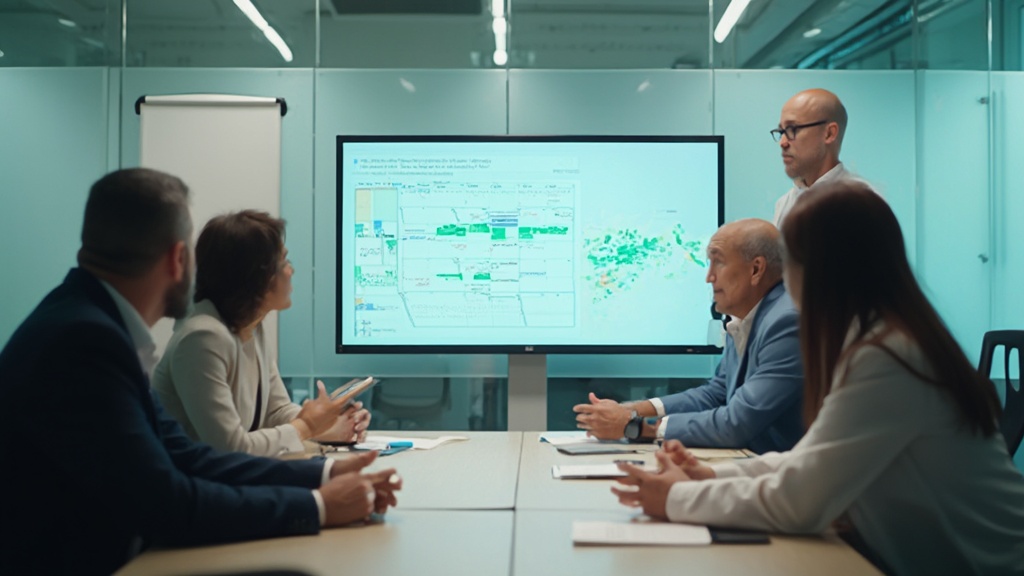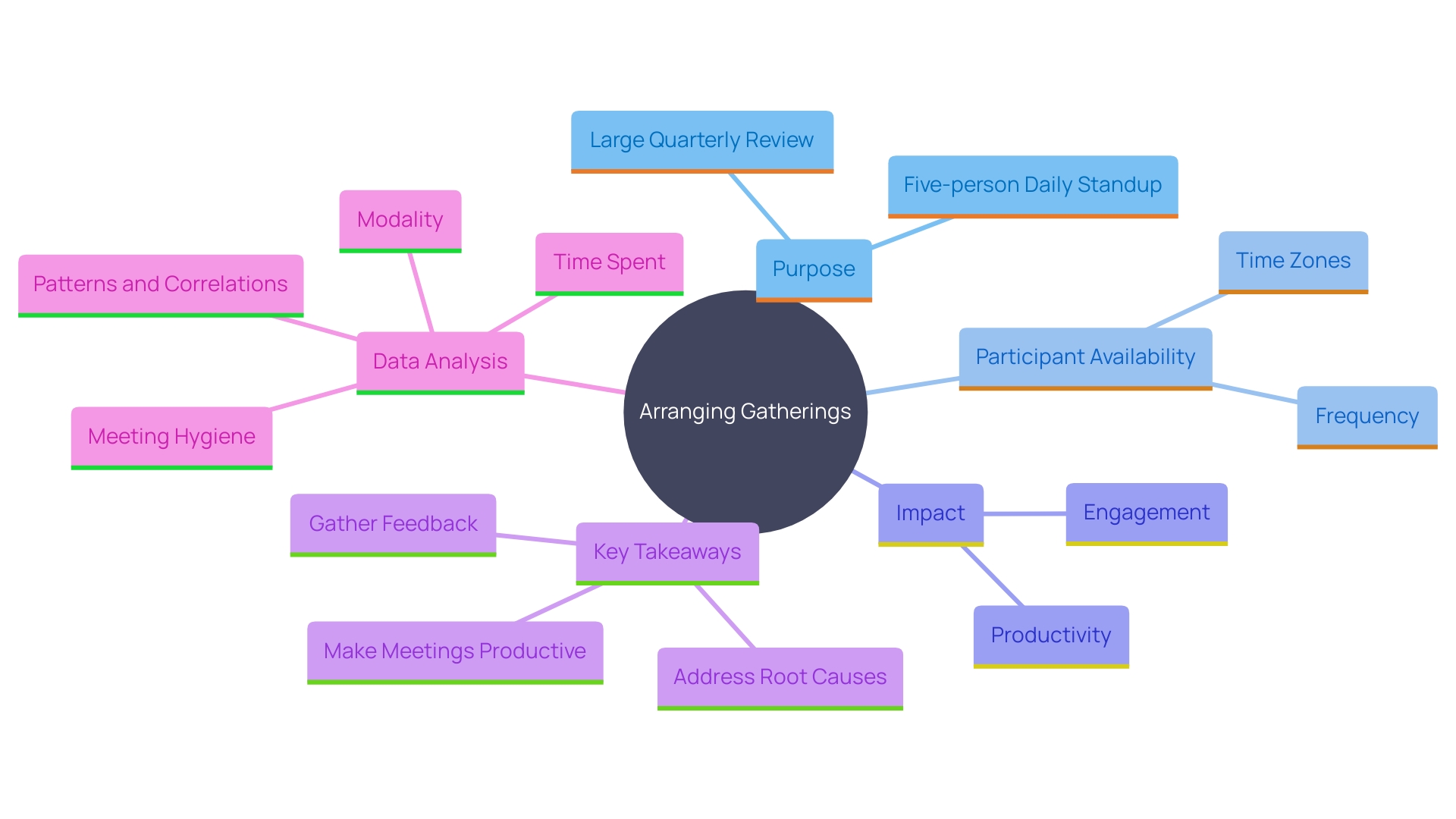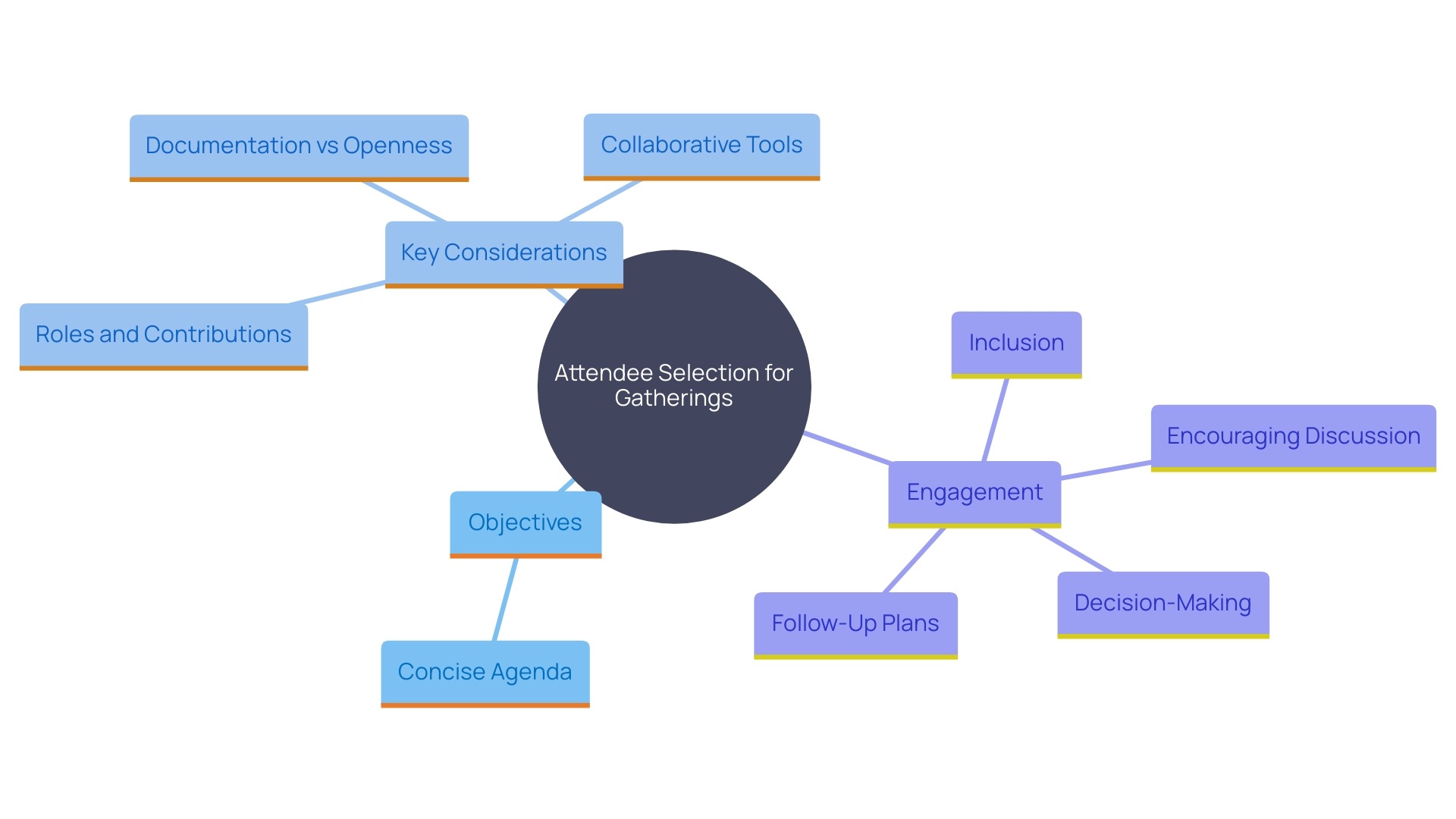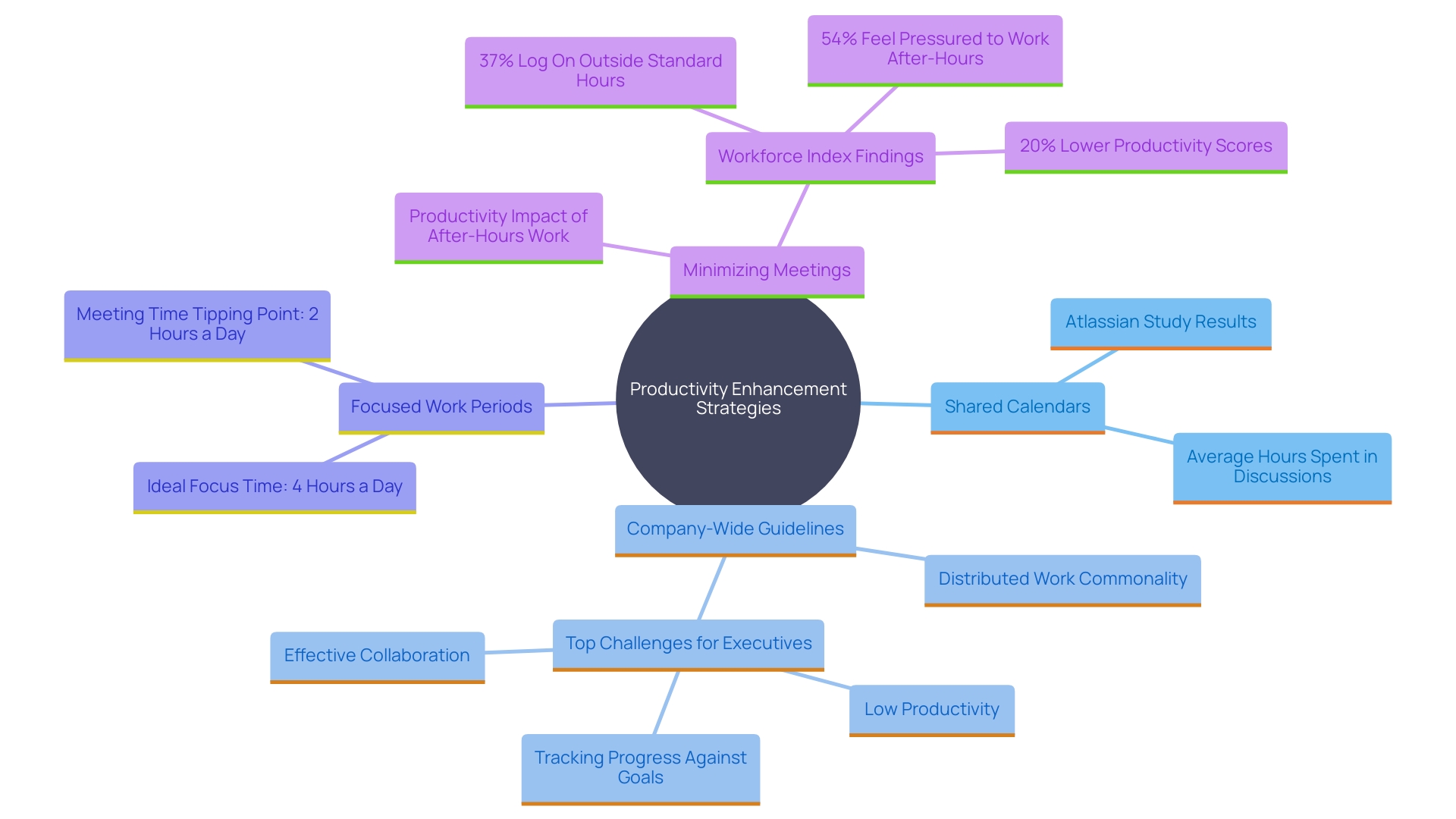Choosing the Best Program to Schedule Meetings Efficiently

Introduction
Meetings are a cornerstone of professional life, yet they often consume a significant portion of our workweek, sometimes with less-than-optimal outcomes. How can teams ensure that their meeting time is well-spent and productive? This article delves into the essential factors that contribute to effective meeting scheduling, from understanding the purpose of the meeting to selecting the right participants and leveraging modern scheduling tools.
Additionally, it offers practical strategies to avoid the pitfalls of scheduling conflicts and overbooking. By integrating these insights, professionals can reclaim valuable time, boost productivity, and enhance the overall meeting experience.
Key Factors in Effective Meeting Scheduling
When it involves arranging gatherings, several crucial elements can greatly influence their efficiency. First, understanding the purpose of the gathering is crucial. Is it to brainstorm, make decisions, or share updates? Each kind of gathering may require a different approach to scheduling. For example, in a recent survey, professionals reported that they allocate an average of 14.8 hours a week in discussions, which is a considerable fraction of their hours. Arranging gatherings with a defined objective can assist in enhancing this duration.
Next, the availability of participants plays a vital role. Utilizing tools that allow team members to indicate their availability can streamline the process. Taking into account that 83% of employees dedicate up to one-third of their workweek to discussions, it’s crucial to guarantee that schedules are organized efficiently. Time zones are another critical factor, especially for global teams. Ensuring that everyone can join at a convenient time helps in maintaining engagement and productivity.
Ultimately, the frequency of gatherings should be evaluated to prevent overloading schedules. With experts indicating an average of 11 million gatherings conducted daily in the United States alone, it’s evident that over-scheduling can result in burnout and reduced effectiveness. Thus, balancing the frequency of gatherings is essential for sustaining involvement and attaining the desired results.

Selecting the Right Participants for Meetings
Choosing the appropriate attendees for a gathering is essential for reaching its goals. You need to determine who should be present based on the objectives of the gathering to ensure productive discussions. Inviting too many people can create confusion and dilute the conversation, while inviting too few may result in missed insights. Creating a guideline for attendance based on roles and contributions can help streamline this process.
Distributing a concise agenda in advance enables attendees to get ready and grasp their importance to the gathering. This approach not only makes the gathering more efficient but also boosts engagement. As David Hawthorne from Pacific Bells puts it, “Effective gatherings have a purpose, an agenda, and a call to action.”. Every person invited must be able to actively contribute to these three components.”
Consider using collaborative tools for note-taking and brainstorming during the meeting, ensuring they are user-friendly and suitable for your group’s size and experience. Furthermore, determine if the gathering should be documented, weighing the advantages of having a record against the possibility of diminished openness among attendees.
Remember, attendee engagement is vital. Based on industry surveys, the primary factors contributing to a memorable gathering experience are content (38%), venue (27%), and destination (25%). Therefore, investing in these areas can significantly enhance the overall experience for participants.

Utilizing Meeting Scheduling Tools and Software
In today’s rapid digital environment, appointment organization tools are crucial for smooth coordination. These tools provide functionalities such as calendar integration, automated alerts, and the capability to suggest various options, greatly minimizing scheduling conflicts—which impact nearly half of all gatherings. Popular platforms such as Calendly, Doodle, and Microsoft Bookings stand out with their intuitive interfaces.
A recent trends report surveyed over 1,300 professionals and found that they spend an average of 14.8 hours per week in discussions, down from 21.5 hours in 2021. In spite of this decrease, gatherings still take up 37% of their hours. Instruments like these assist in simplifying the procedure, conserving precious moments and reducing the back-and-forth dialogue frequently linked to arranging meetings.
As Christina Janzer, Slack’s Senior VP of Research and Analytics, observed, “Meetings are frequently at the core of many issues, making it seem like a vital challenge to address.” In fact, effective planning can result in a 32% enhancement in concentration and a 31% increase in advancement on key priorities, as shown by a study at Atlassian.
By utilizing these advanced scheduling tools, teams can not only boost productivity but also guarantee that their hours are focused on what truly matters.
Avoiding Scheduling Conflicts and Overbooking
Scheduling conflicts can be a major source of frustration and decreased productivity. Using shared calendars to display everyone’s availability can be a game-changer. This transparency allows team members to see when others are free, preventing double-booking and ensuring smoother coordination. Establishing a company-wide guideline on gathering schedules—such as assigning particular days or hours for assemblies—can greatly reduce overlap.
Encouraging team members to set aside periods for focused work is another key strategy. A study at Atlassian’s Team Anywhere Lab discovered that when 60 employees restricted prearranged gatherings to no more than 30% of their week and allocated 30-40% of their week for concentrated work, they indicated a 32% enhancement in focus and 31% more advancement on key priorities. Additionally, reserving periods for concentrated tasks aids in sustaining a balance between discussions and personal duties.
As per research conducted by Slack Technologies, professionals spend an average of 14.8 hours weekly in discussions, reduced from 21.5 hours in 2021, still occupying a notable 37% of their hours. Minimizing unneeded gatherings can create valuable time for more significant tasks. “Every minute you spend in meetings is a minute you spend not focusing,” said Christina Janzer, Slack’s senior vice president of research and analytics. By implementing these strategies, companies can foster a more productive and less stressful work environment.

Conclusion
Effective meeting scheduling is essential for enhancing productivity and reclaiming valuable time in the workplace. By understanding the purpose of each meeting and selecting the right participants, teams can ensure that discussions are focused and fruitful. Clarity in objectives and roles not only boosts engagement but also leads to more meaningful outcomes.
Utilizing modern scheduling tools can further streamline the process, reducing conflicts and making it easier to coordinate among team members. These tools not only save time but also improve the overall meeting experience, allowing professionals to focus on what truly matters. The adoption of shared calendars and designated meeting times can significantly alleviate the frustrations associated with overbooking and scheduling conflicts.
By implementing these strategies, companies can foster a more productive environment, allowing employees to balance meetings with their individual responsibilities. Ultimately, a thoughtful approach to meeting scheduling can transform these gatherings from time-consuming obligations into valuable opportunities for collaboration and progress.
Ready to simplify your scheduling? Download our intuitive extension today and transform the way you manage meetings!
